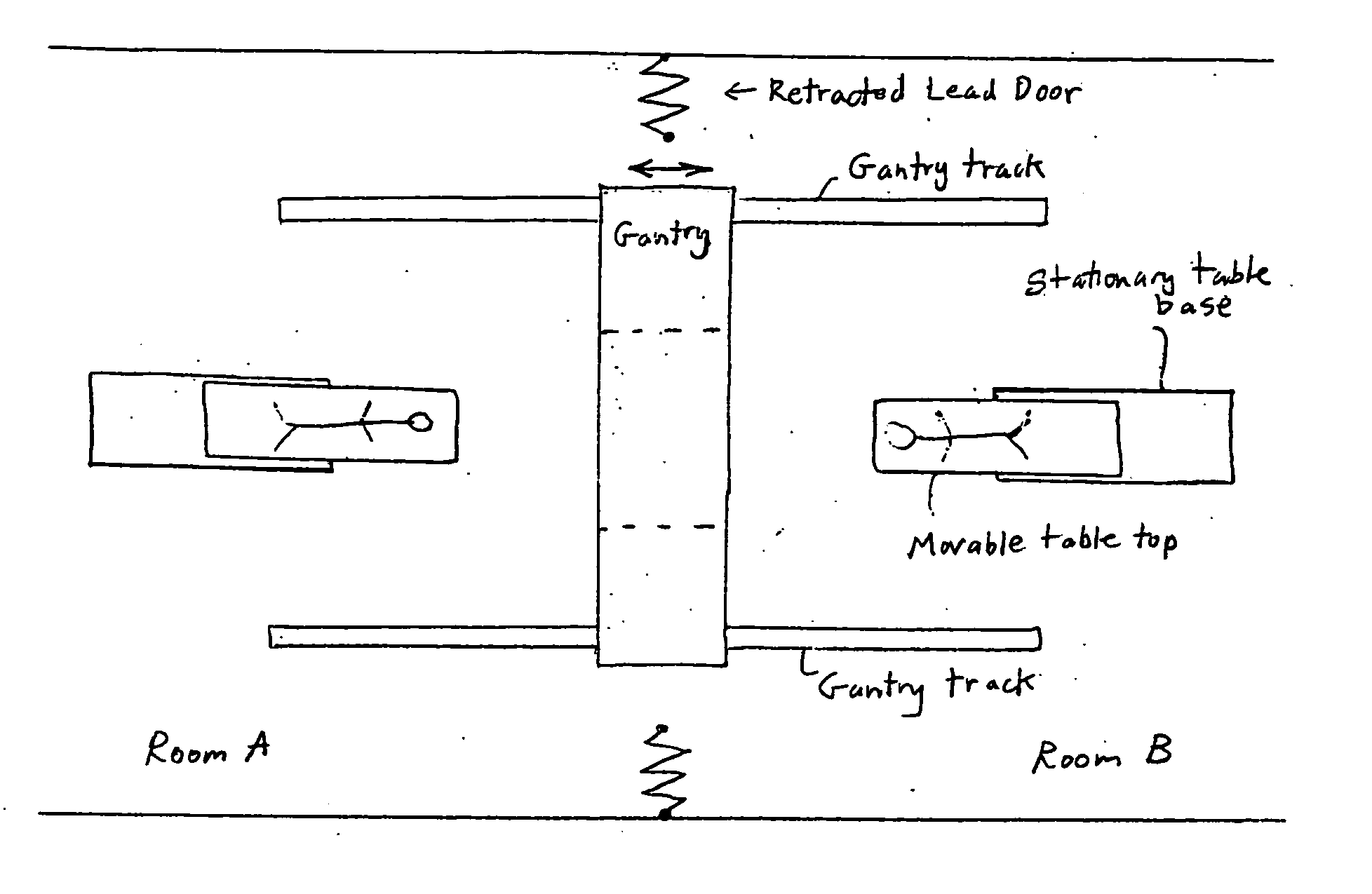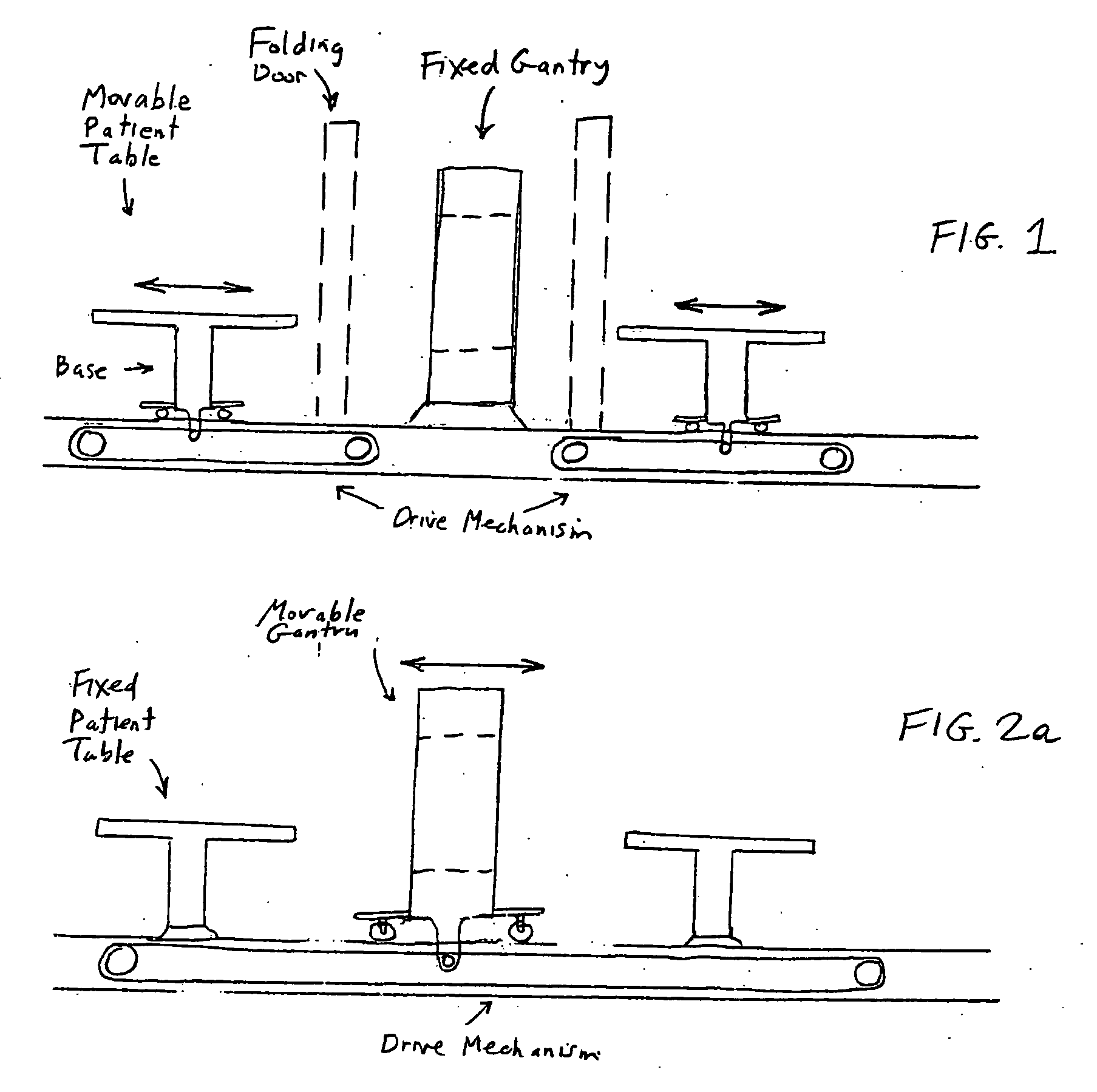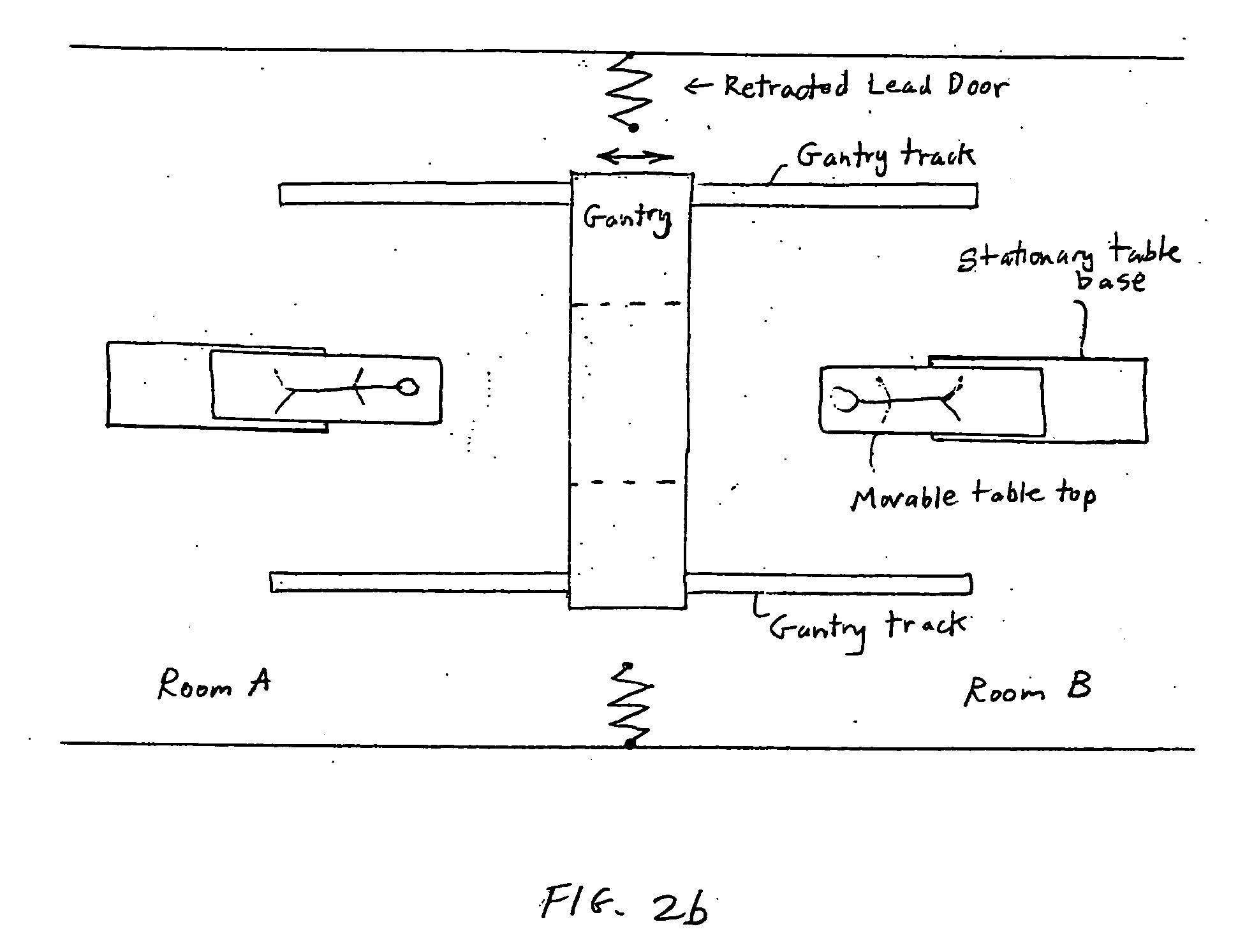Multi-table CT or MRI scanner arrangement for increasing patient throughput
a multi-table, patient-friendly technology, applied in the field of medical imaging system, can solve the problems of limited patient throughput and limiting productivity, and achieve the effects of improving patient care, reducing the high cost of imaging devices, and increasing scan productivity or throughpu
- Summary
- Abstract
- Description
- Claims
- Application Information
AI Technical Summary
Benefits of technology
Problems solved by technology
Method used
Image
Examples
Embodiment Construction
[0026] Conventional medical imaging devices such as CT and MRI scanners have one scanner gantry and one patient table, also referred to as a scanner table. In order to increase scanner productivity and patient throughput, a scanner gantry with two or more patient tables is proposed. The scan can be performed by moving the scanner gantry over the patient on the patient table, moving the patient table through the gantry, or some other arrangement linking the multiple patient tables to the scanner gantry. One CT / MRI scanner with one gantry and two or more tables should increase productivity and revenue at less cost than acquiring two conventional CT / MRI scanners, each having one gantry and one table. Various illustrative arrangements are provided below.
[0027]FIG. 1 illustrates a side view of a medical imaging system having a fixed medical imaging device and movable patient tables guided by floor tracks on each side of the medical imaging device. In this approach, a patient table is pr...
PUM
 Login to View More
Login to View More Abstract
Description
Claims
Application Information
 Login to View More
Login to View More - R&D
- Intellectual Property
- Life Sciences
- Materials
- Tech Scout
- Unparalleled Data Quality
- Higher Quality Content
- 60% Fewer Hallucinations
Browse by: Latest US Patents, China's latest patents, Technical Efficacy Thesaurus, Application Domain, Technology Topic, Popular Technical Reports.
© 2025 PatSnap. All rights reserved.Legal|Privacy policy|Modern Slavery Act Transparency Statement|Sitemap|About US| Contact US: help@patsnap.com



